Jan Mayo exhibits portraits in bloom in Tokyo, Japan
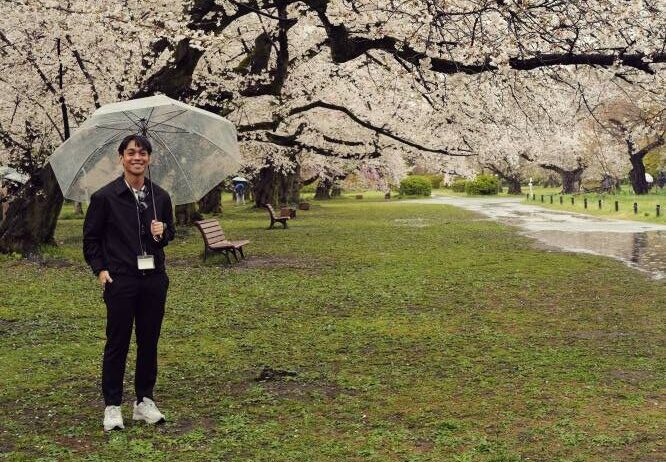
Leafing through Jan Mayo’s masterlist of Philippine flora, you could easily mistake Mayo for a botanist. His notes are meticulous: Beside columns categorizing taxonomic families and scientific names are paragraphs that delve into habitat, conservation status, and even regional folklore.
One entry on Leea manillensis (mali-mali) reads, “a member of the Vitaceae or the grape family of flowering plants… utilized [by] the Hanunóo Mangyan in Oriental Mindoro… as a traditional medicinal plant in treating abdominal pain and swelling body parts.”
Further down, on the Salingbobog tree, he writes, “During its flowering season in summer… green flower buds turn into white petals in early bloom and eventually transform into gold-yellow petals with pinkish to purplish stamens when fully bloomed.”
This is the well-researched context that brings Mayo’s portraits to vibrant life in his upcoming solo exhibition, “Faces and Flora: Philippines and Japan Native Plant Photography,” at Tokyo’s JP Tower Museum Intermediatheque, running from July 12 to Nov. 9.
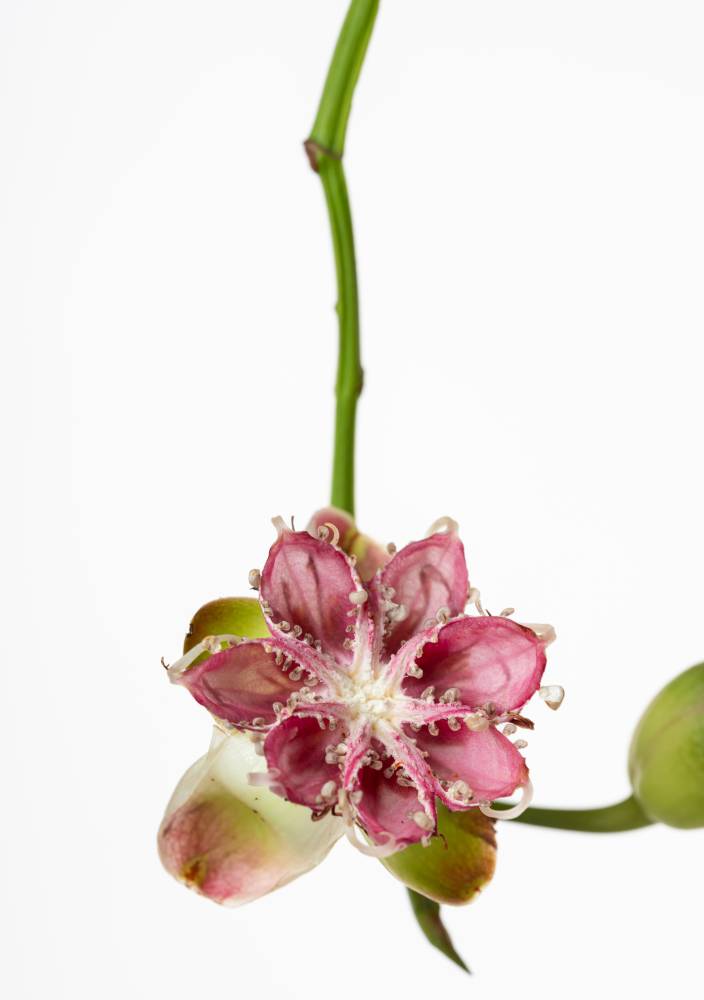
The nearly four-month-long exhibition will feature Mayo’s botanical still-life photographs and portraits of models from both the Philippines and Japan, adorned with native plants from both countries. Through these frames, Mayo maximizes his experience of photographing through an editorial lens hyper-focused on beauty, while heavily backed by research and scientific integrity.
“I’m usually a photographer for fashion and beauty,” Mayo states, “It’s always been done, but there has to be context in it, with research and consultation with the proper people and authorities.”
“Ginagawa namin the portraits with flowers,” he emphasizes, “but let’s do the process differently and properly, in consultation with scientists and researchers.”
The show, a collaboration between the University of Tokyo and the National Museum of the Philippines, has evolved into what he describes as “a cultural exchange program,” supported by the Philippine Embassy in Tokyo and institutions like the Museum Foundation and the Japan Foundation. It also jumps off his well-received show last 2024, “Faces and Flora” exhibited at the National Museum of Natural History in Manila.
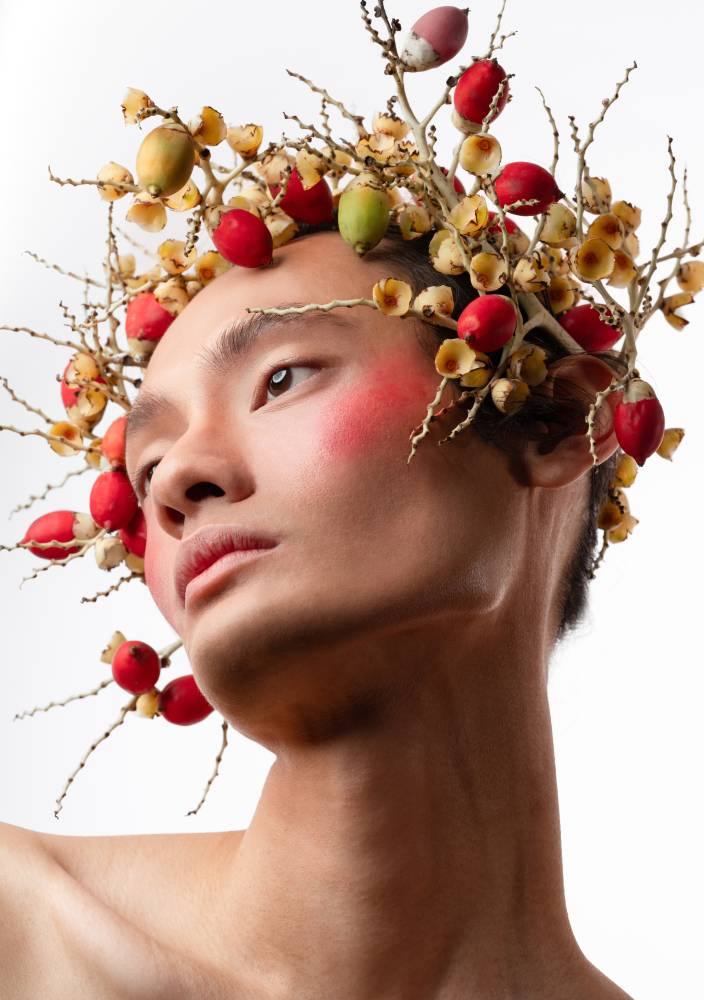
Elevating photography to another plane, this particular project of Mayo all started with a grant in 2022, when Mayo became the first Filipino recipient of the Fujifilm GFX Challenge Grant. Besides being a professional photographer and portraitist, Mayo is adept in the language of grant writing, as well as a trained pilot, dancer, and sports science graduate. So it comes as no surprise that his training is hyper-technical, injecting everything he does with emotions that run deep, subtly so, beneath the surface.
And while institutions were vital in Mayo’s installation of the exhibition, the real work happened in gardens, across time zones, and flowering seasons.
“In 30 minutes, lanta na”
While Mayo’s project sounds dreamy on paper, creating portraiture with fresh flowers, arranged on models, proved to have challenging production logistics. Transport was nearly impossible for fresh flowers and the photographer recalls the coordination that it required to work around this.
Collaborating with scientists and botanists from the UP Institute of Biology, Mayo shot many of the portraits near the UP Arboretum. In Japan, he worked closely with the University of Tokyo, which had ties to the Koishikawa Botanical Garden. He recalls how serendipitously, the sakura flowers bloomed a week late, reaching full bloom during the shoot, and in time with his sojourn to Japan. “I needed to be there,” he states.
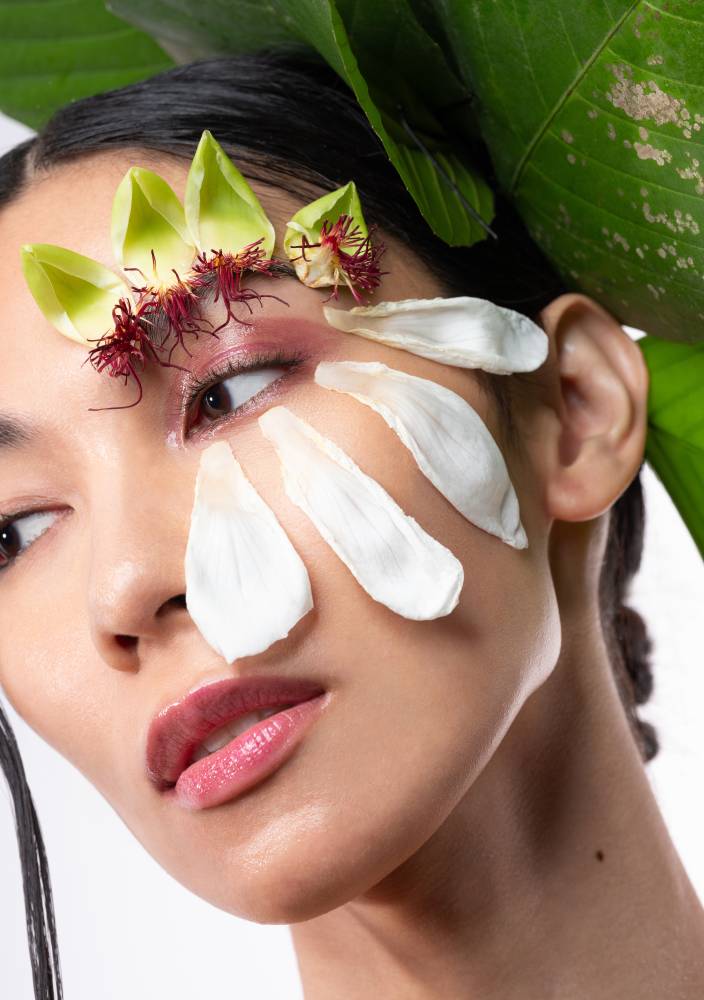
The dual-country project was a race against nature. Some flowers, like the bright yellow petals of the Narra tree, bloom for just two days a year, a window that Mayo unfortunately missed. And so he narrowed the scope to flowering native plants from April to June, choosing what was viable seasonally but what would also be visually complementary to his photographic project.
It was also a learning process, Mayo recalls, who discovered, as did I, that sampaguita, our national flower, and my childhood favorite, santal, are not native species.
After the shoots, the National Museum of the Philippines helped press and preserve the photographed herbarium specimens to be displayed alongside the portraits in the exhibit as fundamental materials for botanical research, including classification, identification, and documentation of natural environments.
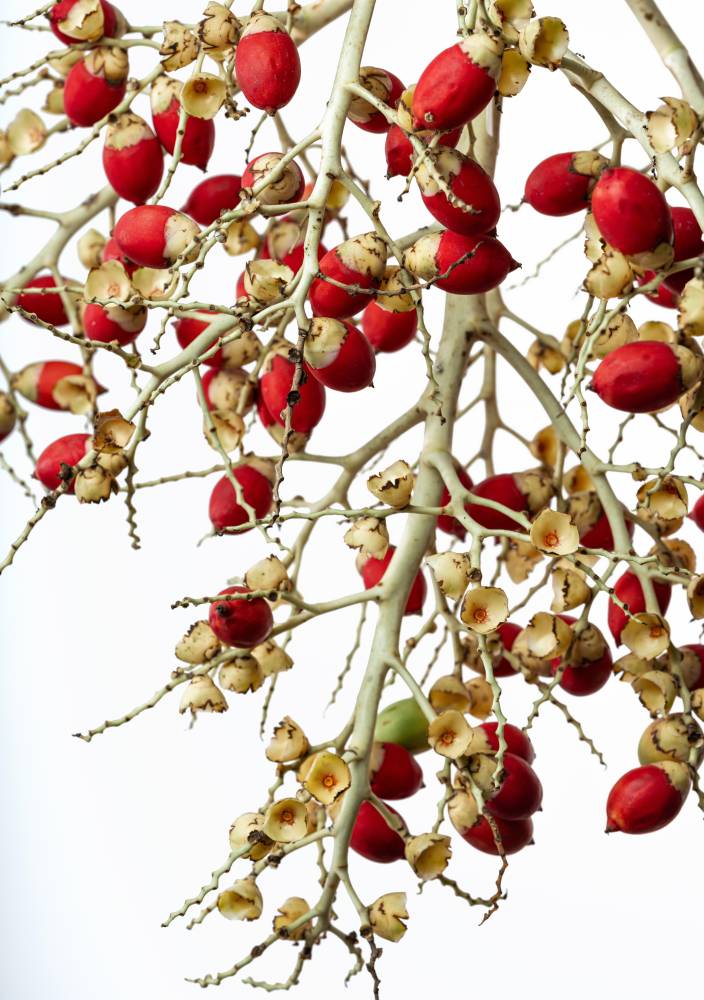
“The whole idea of having the photo of the face, the still life, the dried specimen, for me at least, para sa mga pupunta sa museum, they can imagine the flowers before they wilted.”
Through art and science, Mayo’s exhibit captures the beauty of flora and faces, both in their prime, but with all the supporting research and preservation, underscoring the fragility, science, and cycles of life.
Jan Mayo’s “Faces and Flora – Philippines and Japan Native Plant Photography” runs from July 12 to Nov. 9, 2025 at The JP Tower Museum Intermediatheque, Tokyo, Japan.

















